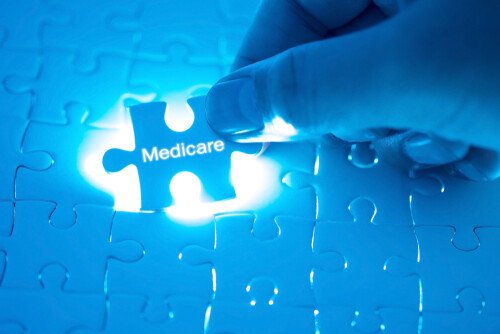The Medicare system is going to be more burdened than ever in the coming years. The problem is two-fold: baby boomers are aging at a worrisome rate. Our poor lifestyle choices have also led to worse health outcomes, which makes them more expensive later in life. Could a shift towards green living contain these costs? It can, but we will not see the benefits until generation Xers are ready to reach nursing homes.
Green Living Might be the Solution to the Medicare Bubble
As we get older, it’s normal for our health to decline. Being diagnosed with a harmful disease in our Medicare years is almost a given. Usually, the diagnosis comes as a surprise too. This happens to many people on a large scale, which is going to make health care costs excessive. However, it doesn’t have to be that way.
There are a number of ways to reduce healthcare costs. One is to focus on teaching people to live greener lifestyles, which will help lower healthcare costs in the future. Lifehack.org has some examples of ways that green living can make you healthier:
- Eating organic food is good for both the environment and your body. By eating food with fewer carcinogens, you will live longer and face a lower risk of developing cancer as you age.
- Relying less on public transportation is a good way to stay healthy for multiple reasons. You will be more physically active if you need to bike or walk places. You will also have less exposure to pollution if you spur a trend. This is one of the reasons cycling-friendly countries like Denmark are such a healthy place to live.
Going green can help you be healthier and cut future healthcare costs. But what do you have to do to keep Medicare costs down in the meantime? It is too late for baby boomers, so these green living tips should be left to the next generation. Baby boomers will need to follow other tips.
Medicare has given their beneficiaries an out. By offering to cover preventive care services at 100% to their members, Medicare is able to help prepare for and even prevent those surprising diagnosis’s from occurring. Even if you are one hundred percent healthy, you should still take advantage of this amazing benefit Medicare provides. You never know when a life-threatening condition could strike you.
These preventive care services could diagnose cancer early enough so that you have a better chance to fight it. These services can lead you to take the proper precautions to ensure that you don’t end up being hospitalized from a heart attack. These preventive care services that Medicare Part B offers could save your life!
Medicare Statistics
Medicare began covering preventive care services at 100% as of January 1, 2011. Before then, Medicare beneficiaries had to meet their deductibles and pay copays to have any type of preventive care service completed.
It’s becoming more and more obvious that today’s Medicare population should take better advantage of these services. Currently, there are nearly 60 million beneficiaries covered by Medicare. According to the Kaiser Family Foundation, over 20 million Medicare beneficiaries have some kind of functional impairment, nearly 19 million have a mental impairment and 556, and almost 17 million have 5 or more chronic conditions.
Even though the Medicare population is struggling in the health department, an astonishing 85 percent of Medicare beneficiaries didn’t even use their free annual wellness visit (AWV) in 2014 according to the Journal of the American Medical Association.
What Preventive Care Services Are Available
Medicare refers to certain health screenings, counseling services, and vaccinations as preventive care services. Today, there are 26 available services. Anybody with Medicare Part B potentially has access to all 26 services.
We use the term “potentially” because some of these services have certain requirements the beneficiary must meet in order for Medicare to cover it. For instance, Medicare will cover a glaucoma test every 12 months if the beneficiary is at high risk. You’re considered to be at high risk for developing glaucoma if you have diabetes, have a family history of glaucoma, are African American and 50 years or older, or if you are Hispanic and 65 years or older. While anyone with Medicare Part B is able to get a Cardiovascular disease screening once every 5 years without meeting special requirements.
Here are all the preventive care services that Medicare offers:
- Abdominal Aortic Aneurysm Screening
- Alcohol Misuse Screening and Counseling
- Bone Mass Measurements
- Cardiovascular (Heart) Disease Screenings and Therapy
- Cervical and Vaginal Cancer Screening
- Colorectal Cancer Screenings (including colonoscopy)
- Depression Screenings
- Diabetes Screenings
- Diabetes Self-Management Training
- Flu Shots
- Glaucoma Tests
- Hepatitis B Shots
- Hepatitis B Virus Infection Screening
- Hepatitis C
- HIV Screening
- Lung Cancer Screening
- Mammograms (women only)
- Nutrition Therapy (meeting with dietitian)
- Obesity Screenings and Weight Management Counseling
- Pneumococcal Shots
- Prostate Cancer Screenings
- Sexually Transmitted Infections Screening
- Tobacco Use Cessation Counseling
- Your Yearly “Wellness” Visit
- “Welcome to Medicare” Preventive Visit
Like we mentioned earlier, some of the services have requirements and restrictions in order for Medicare to cover them. However, we recommend that you make sure to use a provider that accepts Medicare assignment regardless of which services you are getting done.
This will ensure that the provider will only charge the amount Medicare has set for that service. Instead of them charging you excess charges that could go up to 15% more than the Medicare approved price.
Take Advantage of This Benefit
You can eat and exercise just like all the experts recommend, but there is always the possibility of having a surprise diagnosis. That’s why you should take advantage of these preventive care services. You know what they say, you’re always healthy until one day you’re not.
Going Green is a Long-Term Solution to Medicare Sustainability
Medicare is under a lot of pressure as the population ages and is less healthy. Fortunately, green living tips can help reduce future healthcare costs. This means that Generation Xers and millennials will be able to keep costs in check by the time they are ready to retire, provided they live green lifestyles.


 Environment10 months ago
Environment10 months agoAre Polymer Banknotes: an Eco-Friendly Trend or a Groundswell?

 Environment11 months ago
Environment11 months agoEco-Friendly Home Improvements: Top 7 Upgrades for 2025

 Features9 months ago
Features9 months agoEco-Friendly Cryptocurrencies: Sustainable Investment Choices

 Features10 months ago
Features10 months agoEco-Friendly Crypto Traders Must Find the Right Exchange






























